Hyperbaric Oxygen Therapy for Mold Toxicity
A Promising Off-Label Treatment Option
Hyperbaric Oxygen Therapy (HBOT) is an off-label treatment that may benefit individuals suffering from mold toxicity, a condition caused by exposure to toxic mold spores that can lead to chronic health issues such as fatigue, respiratory problems, and cognitive difficulties.
While HBOT is FDA-approved for certain medical conditions, its use in addressing mold toxicity has not been specifically approved. However, its effectiveness at delivering pure oxygen at increased atmospheric pressure, allowing the body to absorb significantly higher levels of oxygen than normal has shown to increase immunity in clinical studies which in turn promotes the healing of tissues damaged by mold exposure. By supporting cellular repair and regeneration, HBOT has the potential to alleviate symptoms and improve the overall well-being of those exposed to mold toxicity.

Symptoms of Mold Toxicity
Mold toxicity, also known as chronic mold exposure or mold illness, can cause a wide range of symptoms that often go undiagnosed or are mistaken for other conditions. Prolonged exposure to mold spores, especially in damp or poorly ventilated environments, can lead to significant health issues.
The symptoms can vary widely depending on the individual and the level of exposure, but they often affect multiple systems in the body, making diagnosis challenging.

Below are some of the common symptoms associated with mold toxicity:
- Chronic Fatigue
- Persistent tiredness and lack of energy that doesn’t improve with rest.
- Respiratory Issues
- Chronic cough, wheezing, shortness of breath, and nasal congestion.
- Cognitive Difficulties (Brain Fog)
- Difficulty concentrating, memory problems, and confusion.
- Headaches
- Frequent or chronic headaches, often accompanied by migraines.
- Sinus congestion, sinus infections, and post-nasal drip.
- Mood Changes
- Symptoms include nausea, diarrhea, bloating, and abdominal pain.
- Eye Irritation
- Rashes, hives, or itchy skin without a clear cause.
- Digestive Issues
- Watery, red, or itchy eyes, and sensitivity to light.
- Muscle and Joint Pain
- Aches, stiffness, and swelling in muscles and joints.
- Increased anxiety, depression, mood swings, and irritability.
- Skin Irritation
Recognized Benefits of HBOT
A study on the effects of HBOT demonstrates how increased oxygenation helps neutralize harmful toxins and supports cellular regeneration. This aligns with the need for enhanced detoxification processes in mold-exposed individuals.
Additionally, HBOT boosts the immune system and promotes the healing of tissues damaged by mold exposure. By improving cellular repair and reducing oxidative damage, HBOT has the potential to alleviate symptoms and improve the overall well-being of those affected by mold toxicity. This non-invasive, drug-free approach provides an alternative option for patients seeking relief from mold-related health issues.
- Boost Red Blood Cell Production
- Increase V02MAX
- Increase Mitochondria Production
- Decrease Inflammation
- Boost Metabolism and Immunity
- Improve Overall Fitness, Performance, & Recovery
- Decrease Inflammation, Pain, and Fatigue
- Antioxidant Therapy Reduces Oxidative Stress
- Improve Circulation
- Maintain or regain your athletic ability
- Accelerate recovery with faster healing
- Eliminate toxins


